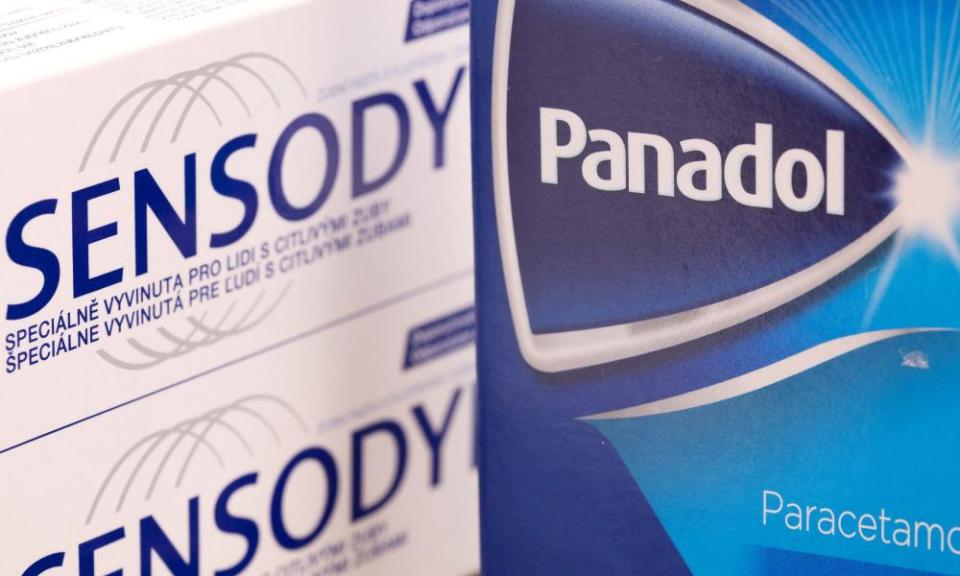Haleon’s debut suggests it may not be the jewel in GSK’s medicine cabinet

It’s early days for Haleon, GlaxoSmithKline’s consumer goods spin-off, but the day one valuation of £28.5bn for the Panadol-to-Sensodyne business represented a less than storming debut for the biggest European listing for more than a decade.
A par score was reckoned to be about £30bn. Red-hot territory would have been around the £35bn mark. And taking account of the £10.5bn of borrowing assumed by Haleon, an implausible £39.5bn would have been required to match the £50bn offered by Unilever in January.
For investors who intend to hang around for decades (ie not GSK or co-rider Pfizer, which want to “monetise” their rump holdings gradually) the initial valuation matters little. But it is also true that a six-month roadshow hasn’t exactly conjured images of Haleon as an unpolished jewel, hidden down the back of GSK’s medicine cabinet, just waiting to sparkle in liberated form.
Rather, investors have taken the promise from the boardroom of annual sales growth of between 4% and 6% into the middle distance with a pinch of salt. They can understand how 4% happens, since the unit has nudged above that rate over the past couple of years, albeit with a shove from the launch of an over-the-counter form of Voltaren, a pain reliever. But they’ll believe a market-smashing 6%-ish when they see it. Not many global healthcare businesses run at that pace for long.
In the meantime, Unilever’s shareholders can feel they were entitled to stage a mini-riot to prevent their company from adding a few more billions on to the (rejected) £50bn offer price. Haleon looks a solid and cash-generative business, and a worthy addition to the ranks of top 20 FTSE 100 stocks. But it is yet to show it deserves to be rated as anything other than a defensive performer.
Just what Deliveroo’s shareholders ordered?
Terrific news for Deliveroo’s shareholders, eh? Well, sort of. The growth in orders on the app has slumped – to just 2% in the second quarter of this year, compared with 12% in the first – but the loss-making food delivery business should make a smaller than expected loss this year. The shares rose by 7% on this mixed news.
The stock market’s logic wasn’t quite as perverse as it looked at first glance. In the context of a 75% fall in the share price from last year’s overhyped float, growth in orders of any size almost counts as reassuring. In a cost of living squeeze in which a takeaway is an obvious household saving, the slowdown could have been worse (and may still be in future).
And the maintenance of guidance on operating margins for the full year, within the previously advertised range of between -1.5% and -1.8%, should not be dismissed. It suggests Deliveroo has found a few savings and is adapting to rougher trading conditions.
Zoom out to the big picture, however, and little has really changed. The long-term economics of the delivery game are still anybody’s guess and a mighty £3.56bn of “gross transaction value” in six months still hasn’t delivered a profit in Deliveroo’s case. Competition is intense and the consolidation script is uncertain.
This is still a company whose £1.6bn stock market value is mostly accounted for by the cash it raised at float. The market remains understandably sceptical. In the round, a cost of living crisis cannot be a good development.
Direct Line joins car insurer pile-up
Another day, another profit warning from a motor insurer. This time, it was Direct Line that told a sorry tale of severe price inflation in the claims department. Vital car parts have been delayed in misfunctioning supply chains, repairs are taking longer and customers are driving around in courtesy vehicles for weeks on end, at insurers’ expense.
All of which confirms that Sabre Insurance, the specialist vehicle insurer that warned on profits last week, was on the money when it said the problems are industry wide and have not been covered by the rise in insurance premiums. Share prices have tumbled across the sector. Sabre is down by 44% since the warning. Direct Line is off by 18% in the same period. And Admiral, from which a profit warning is surely only a matter of time, is a quarter lower.
This industry-wide prang for shareholders does not reflect well on City analysts’ collective ability to sniff trouble. Aren’t these experts meant to monitor used car prices, garage repair rates and insurance premiums so the rest of us don’t have to? The way the companies tell it, most of this stuff has been an open industry secret for weeks.

 Yahoo Finance
Yahoo Finance 